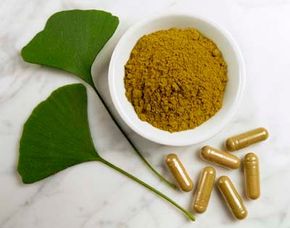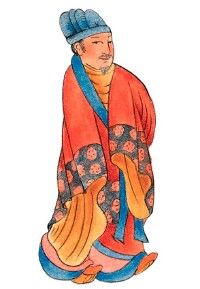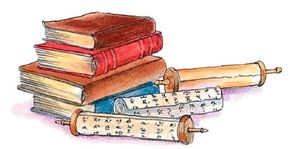The written history of traditional Chinese medicine has evolved mostly over the last 3,000 years. Archaeological digs from the Shang Dynasty (1,000 b.c.) have revealed medical writings inscribed on divination bones: early shamans, mostly women, used scapula bones to perform divination rites; later these bones were also used for writing.
The discovery in 1973 of 11 medical texts written on silk has shed some light on the sophisticated practices of that early period of Chinese history. Dated to 168 B.C., the texts discuss diet, exercise, moxibustion, and herbal therapy.
Liberally mixed with shamanistic magic, an extensive text, Prescriptions for Fifty-two Ailments, describes the pharmacological effects of herbs and foods.
Also dating from about this time is the legend of Shen Nong, the Emperor of Agriculture, who tasted 100 herbs daily to assess their qualities. (He is said to have been poisoned many times in the course of his investigations.)
The book that is attributed to him is known as the Classic of the Agriculture Emperor's Materia Medica. It lists 365 medicines, comprising 252 plants, 67 animals, and 46 minerals.
Tao Hong-Jing, the editor of the version of Shen Nong's Materia Medica in use today, divided the herbs into three classes. The upper-class herbs are nontoxic tonics that strengthen and nourish the body, the middle-grade herbs are tonics with therapeutic qualities, and the lower grade consists of herbs that treat disease or possess some toxicity.
This classification system gives a glimpse into an important principle in traditional Chinese medicine: It is better to strengthen the body and prevent disease than to fight illness once it has already taken hold.
Ignoring preventive health care and waiting to treat disease was considered as foolish as waiting until you are thirsty to dig a well.
By A.D. 400, the basic foundations of traditional Chinese medicine had been put into written form. By this time, most of the magical aspects of medicine had been left behind; there was an increasing belief in the powers of nature to heal disease.
The most important book compiled between 300 B.C. and A.D. 400 is The Yellow Emperor's Inner Classic (Huang Di Nei Jing). The work is purported to be a series of conversations between the Yellow Emperor, Huang Di, and his minister, Qi Bo, although many historians believe it is a compilation of all the medical knowledge of that period. The work is divided into two books: Simple Questions and Spiritual Axis.
The first book deals with general theoretical principles, while the second more specifically describes the principles of acupuncture and the treatment of disease. Remarkably, this ancient work is still valid; it forms the foundation for the contemporary practice of traditional Chinese medicine. For example, the Nei Jing states that cold diseases should be treated with hot herbs, and hot diseases should be treated with cold herbs. This principle is still followed today in clinical practice.
Hot, inflammatory infections are treated with cold herbs such as honeysuckle flowers or Coptis root; cold, debilitating conditions such as chronic fatigue are treated with warm, stimulating herbs such as ginseng or Astragalus roots.
Modern research has confirmed that these plants contain constituents with strong pharmacological effects on these specific conditions. By the second century A.D., physicians all over China were compiling writings of the latest discoveries in acupuncture and herbal medicine. It was during this time that the famous physician Hua Tuo wrote about herbal anesthesia.
Although his formula for the anesthetic has been lost, his unique system of acupuncture points is still in use. He was also a pioneer in recommending exercise as a method of maintaining wellness. He is quoted as saying "a running stream never goes bad," meaning exercise moves qi and prevents the stagnation that leads to disease.
Another pioneer of the time was Zhang Zhongjing, who wrote Treatise on Febrile and Miscellaneous Diseases after witnessing an epidemic that ravaged his city and killed most of his relatives. This highly regarded physician developed a system of diagnosis so sophisticated that it is used by practitioners in modern hospitals 1,700 years after his death.
Chinese medicine showed a steady progression over the centuries. Learn more about the advancement of traditional Chinese medicine on the next page.
For more about traditional Chinese medicine, treatment, cures, beliefs, and other interesting topics, see:


